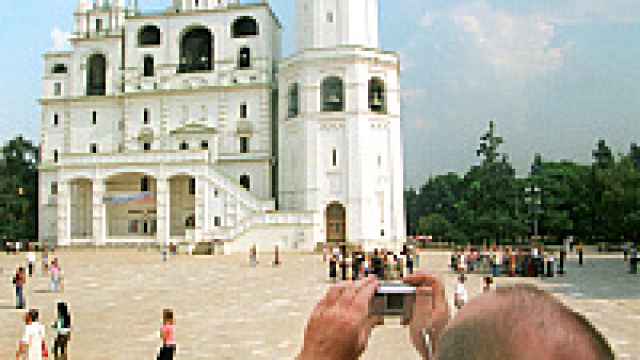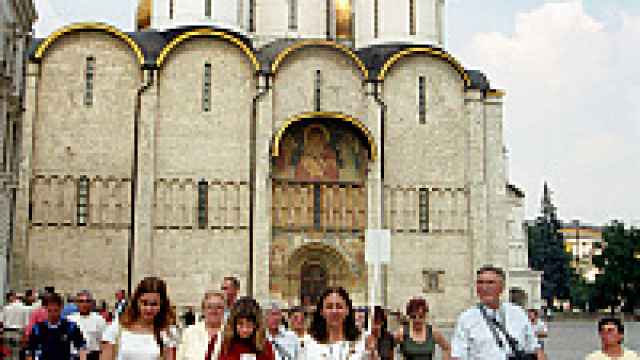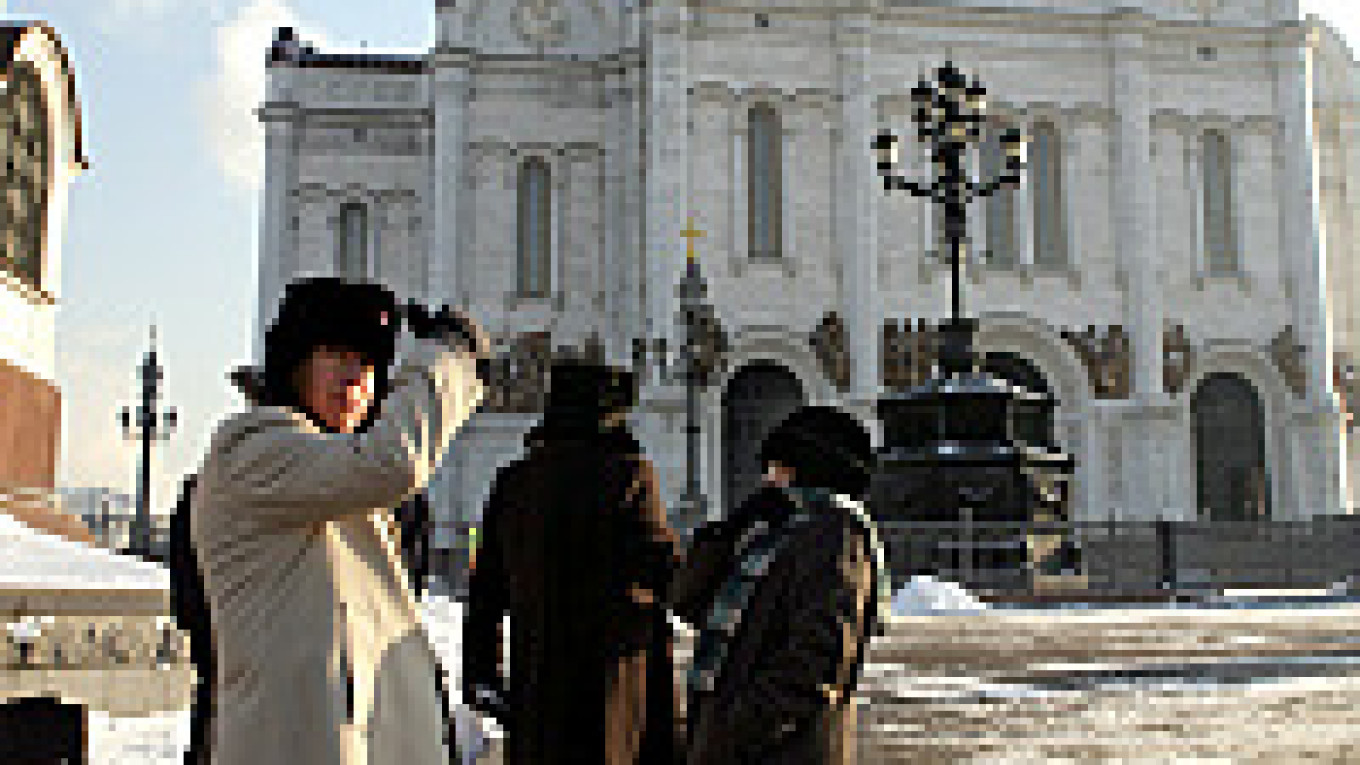"I was once told to leave the church in Kargopol since the guy on duty believed I was talking too loudly," said Yaroslav Blanter, who lives in the Netherlands but is originally from Russia, "although there was no service going on and there was no one else in the building."
Others have had similar experiences even in touristy Suzdal, with devout locals blocking entry to practicing churches and telling visitors to stick to those that serve as museums.
But despite such overly protective church attendants, in general, tourists are welcome in most Russian churches as long as they are respectful and properly dressed. To a newcomer, however, the correct way to behave is not always obvious. An Orthodox service can be confusing -- parishioners sporadically arriving, walking around, lighting candles, bowing, crossing, and kneeling. ... Yes, some things are different.
"What always amazes me is how long the service is and that there are no chairs and few benches," said Ruth Imerstein, a frequent visitor from the United States.
In Russian Orthodox services, the parishioners stand for the entire service. The few chairs that hide in the corners are theoretically only for the elderly and the infirm. The regular service lasts about 90 minutes, and people may be seen coming and going during this time ?€“ that's not really the Orthodox way, but not everyone can make the full commitment in terms of time.
Orthodox believers typically light candles when entering the church. They can be bought at a stand that is usually close to the entrance, where books and various church paraphernalia are for sale. Where to put them is entirely personal -- the icon in the center is usually the one corresponding to the current holiday and is the most accessible, so many of the candles end up there. Many people cross themselves and kiss the icon (never on the face of the depicted saint, however) before and after lighting the candle. Visitors are usually encouraged to buy a candle -- it's not only an offering to God but a major source of revenue.
When entering a church, believers cross themselves and bow before stepping over the threshold. The sign of the cross is made by touching the right shoulder before the left, which is the opposite of how it's done in Catholic practice.
"The difference is not symbolic or dogmatic," said Father Afanasy Gumerov of Sretensky Monastery. "It is simply based on Orthodox tradition, which was brought by the first priests from the Byzantine Empire."
For a nonbeliever, crossing oneself is not necessary and could be considered dishonest.
 Boris Kavashkin / Itar-Tass Photography is not always allowed at religious sites, so when in doubt, ask first. | |
In general, if you are a tourist, don't try to act like you're something else, said one of the attendants at Moscow's Epiphany cathedral of Elokhovo, who only gave her name as Natalya. If your only purpose is to see the church itself, come outside of service hour, she added.
Morning services commonly start anywhere from 7 to 9:30, and evening services are at 5 or 6.
Tourists are welcome to photograph Elokhovo's opulent interiors at no charge, but this is not a general rule, however: allowing photography is up to the discretion of the parish priest. In monasteries there is usually a fee, and tripods are often not allowed at all. When in doubt, ask.
Monasteries tend to enforce stricter rules than parish churches. Most allow both independent tourists and excursions, but, as Archpriest Vsevolod Chaplin of the Moscow Patriarchate department for external church relations put it: "Monks and nuns are individuals that have knowingly left worldly society and have the right to a different way of life, which often contradicts large amounts of noisy visitors."
 Boris Kavashkin / Itar-Tass Tourists crowd the churches in summer. | |
"A well-mannered person wouldn't go to a classical concert wearing shorts and sneakers," said Bishop Amvrosy Yermakov of Sretensky Monastery. "He would wear a suit and a nice shirt with a tie. Looking inappropriate in the church can be distracting to others."
Even if you remember the basics, sometimes the "human factor" prevails; the church attendant might be having a bad day and tell you to "go to the church for tourists" instead. Since there are no universal rules spelling out tourist rights, your experience is arbitrary, especially if you are not visiting with a group.
The status of many Orthodox landmarks is in flux: Some churches served as warehouses or gyms, and the most significant monuments were converted into museums during the Soviet years of state atheism. Unpleasant incidents sometimes result from the friction between secular and religious interests for a particular church: Last July a local Cossack army overtook a church near Rostov-on-Don that had been a museum for decades. Taking one of its workers as a hostage, the Cossacks demanded that the building be given to the Rostov Diocese and function as a place of worship once again, instead of attracting "tourists in shorts and girls with bare bellybuttons," NTV television reported.
So if you don't want to risk any run-ins with babushkas or mustachioed soldiers while on a tour to a Russian cathedral, remember the basic rules of a good traveler: Be respectful, and don't forget that the Russian equivalent of the saying "When in Rome do as the Romans do," is "Don't go into someone else's monastery with your own charter."
A Message from The Moscow Times:
Dear readers,
We are facing unprecedented challenges. Russia's Prosecutor General's Office has designated The Moscow Times as an "undesirable" organization, criminalizing our work and putting our staff at risk of prosecution. This follows our earlier unjust labeling as a "foreign agent."
These actions are direct attempts to silence independent journalism in Russia. The authorities claim our work "discredits the decisions of the Russian leadership." We see things differently: we strive to provide accurate, unbiased reporting on Russia.
We, the journalists of The Moscow Times, refuse to be silenced. But to continue our work, we need your help.
Your support, no matter how small, makes a world of difference. If you can, please support us monthly starting from just $2. It's quick to set up, and every contribution makes a significant impact.
By supporting The Moscow Times, you're defending open, independent journalism in the face of repression. Thank you for standing with us.
Remind me later.


